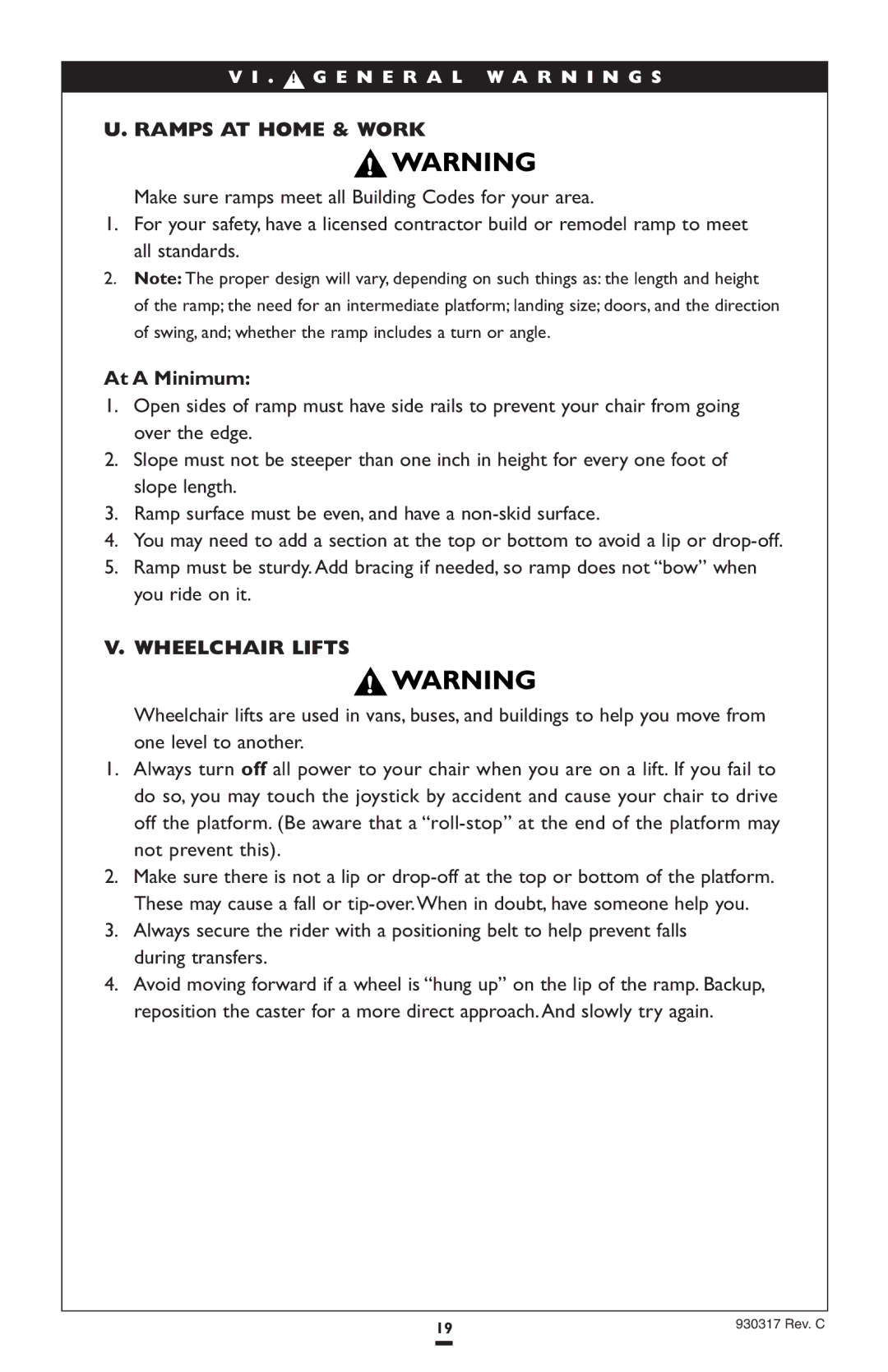
V I . | ▲ | G E N E R A L W A R N I N G S |
! |
U. RAMPS AT HOME & WORK
Make sure ramps meet all Building Codes for your area.
1. For your safety, have a licensed contractor build or remodel ramp to meet all standards.
2. Note: The proper design will vary, depending on such things as: the length and height of the ramp; the need for an intermediate platform; landing size; doors, and the direction of swing, and; whether the ramp includes a turn or angle.
At A Minimum:
1. Open sides of ramp must have side rails to prevent your chair from going over the edge.
2. Slope must not be steeper than one inch in height for every one foot of slope length.
3. Ramp surface must be even, and have a
4. You may need to add a section at the top or bottom to avoid a lip or
5. Ramp must be sturdy. Add bracing if needed, so ramp does not “bow” when you ride on it.
V. WHEELCHAIR LIFTS
Wheelchair lifts are used in vans, buses, and buildings to help you move from one level to another.
1. Always turn off all power to your chair when you are on a lift. If you fail to do so, you may touch the joystick by accident and cause your chair to drive off the platform. (Be aware that a
2. Make sure there is not a lip or
3. Always secure the rider with a positioning belt to help prevent falls during transfers.
4. Avoid moving forward if a wheel is “hung up” on the lip of the ramp. Backup, reposition the caster for a more direct approach. And slowly try again.
19 | 930317 Rev. C |
|
|
